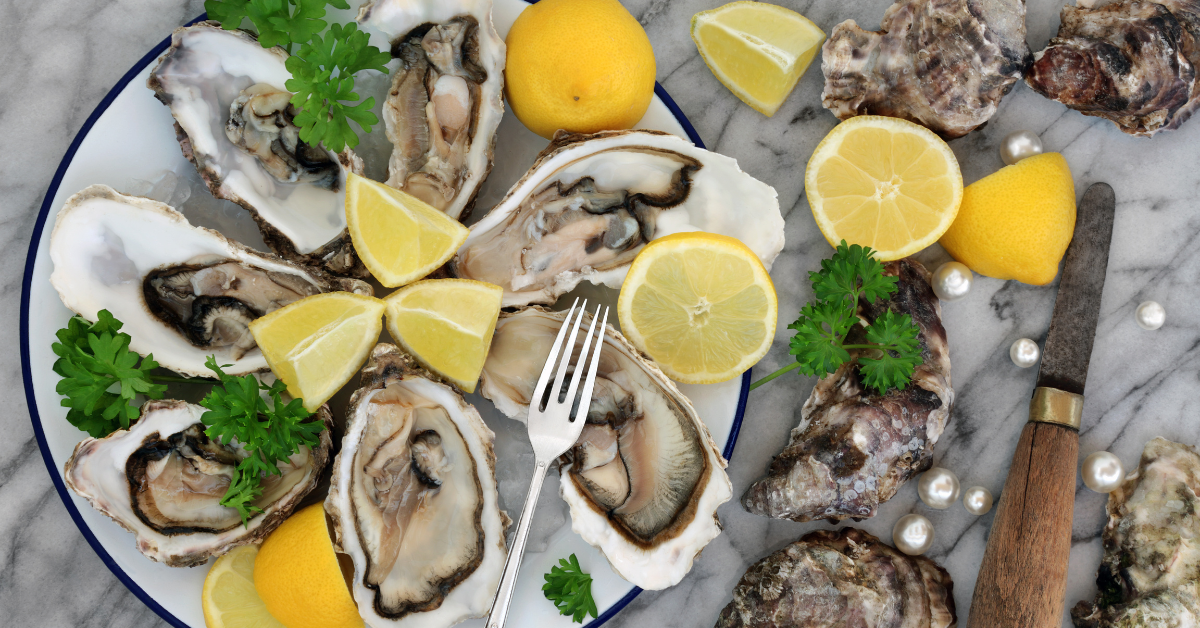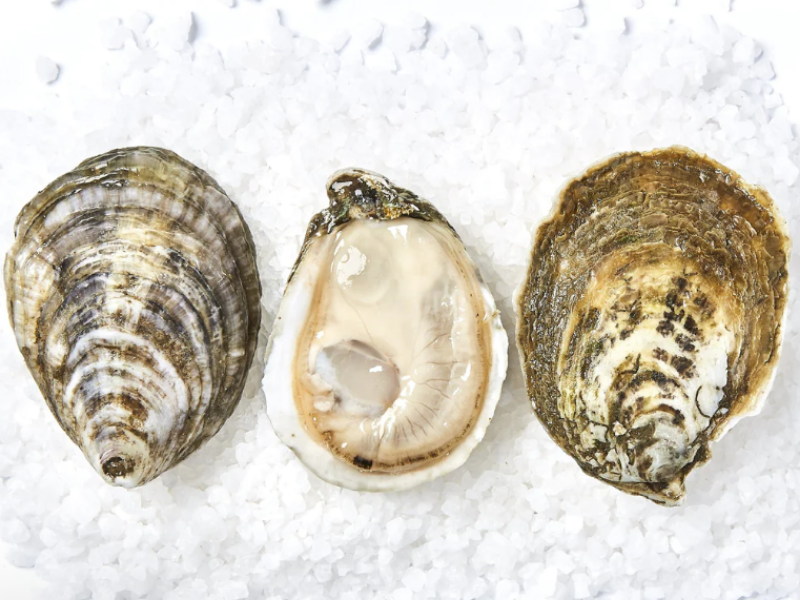
Oysters are one of the most delicious and intriguing offerings from the sea!
Their briny taste and varied textures make them a singular gustatory experience. But not all oysters are created equal. Discerning the genuinely great ones takes a bit of knowledge and technique.
Join us as we explore the nuances of oyster flavor profiles and offer guidance on tasting and evaluating these gems of the ocean. We'll cover everything you need to know so you can savor the excellence of flavorful oysters.
Understanding Oyster Flavor Profiles
An oyster's flavor is heavily influenced by its merroir - the environmental conditions where it grew. This includes the salinity and temperature of the water, as well as phytoplankton and nutrients. Just as wines reflect their terroir, oysters reflect their merroir. Let's look closer at this key driver of oyster flavors.
Merroir: The Flavor of Oysters
The merroir imparts this shellfish with its unique taste profile based on the balance of salty brininess and sweetness. Oysters from cold waters tend to be more firmly textured and robust, with higher salinity. Those from warm waters often have a softer meat that tastes sweeter and creamier. The phytoplankton and algae oysters feed on also affect their flavor. Understanding merroir helps explain the intricate range of tastes among oyster varieties.
What Makes White Stone Oysters Unique?

Grown near Virginia's Rappahannock River, White Stone oysters thrive in a merroir that blends fresh and salty waters - resulting in a signature flavor profile. Their special tumbling and floating cage technique allows the oysters to achieve the best growth. The result is a tender, succulent oyster with a delicate brininess, sweet undertones, and a clean, mild finish. White Stone oysters are a premium example of the merroir's magic.
How to Taste and Evaluate Oysters
Now that you know what makes an oyster's flavor, it's time to taste and assess them yourself. Here are some tips:
Examining the Oyster Shell
When selecting oysters, start by examining the shell. Look for oyster shells that are tightly closed or close securely when tapped lightly. This signals freshness. Oysters with gaping or crushed shells should be avoided.
The shape of the shell also offers clues about the oyster's merroir. More elongated, deeper cupped shells generally come from less briny conditions, while rounder shells indicate oysters grown in saltier waters.
Assessing the Oyster Meat
Next, inspect the oyster meat inside the shell. It should look plump, moist, and smooth without any milky residue. Sniff to check for a mild, fresh sea breeze aroma. Discard any with a strong fishy or ammonia-like smell, which indicates spoilage. We take special care when packing and shipping our oysters to make sure only the freshest seafood reaches your doorstep!
When tasting, chew the raw oyster gently to appreciate its texture and flavor nuances. An excellent oyster will offer a tantalizing balance of salty brininess and sweetness, without any harsh or metallic tastes.
Your Guide to Enjoying Raw Oysters
Now that you know how to select and taste excellent oysters, here are some tips for raw oyster enjoyment:
- Chill oysters on ice to accentuate brininess.
- Add just a squeeze of lemon or light mignonette to let their flavor shine.
- Slurp from the shell and savor the delicate merroir flavors.
- Pair with crisp, bright wines and beers - avoid bold reds.
- Offer oyster knives, gloves, and lemon wedges for easy eating.
- Attractively display oysters on ice with lemon and cocktail sauce.
Perfect Fall Wine Pairings for Oysters

As the weather cools, heartier wines make excellent pairings for briny oysters. Here are some perfect fall wine pairings:
- Dry rosé sparkling wines like Crémant de Bourgogne have just enough body and berry flavors.
- Unoaked Chardonnay from cooler regions offers a clean taste without heaviness.
- Medium dry Rieslings have bright acidity that cuts through richness. German Spätlese is a great option.
- Pinot Gris from Oregon and Alsace have stone fruit notes that complement oysters.
- Pinot Noir is an elegant red pairing with complex earthy cherry and raspberry flavors. Try varieties from cooler climate regions.
- Stay away from oaky Cabernet Sauvignons and Zinfandels that will overpower fresh oysters.
- When pairing wines, stick to crisp, medium-bodied options that won't mask the oysters' delicate brininess. Savor the merroir by keeping the wine pairing light.
When in doubt, keep it light, bright, and refreshing!
Frequently Asked Questions about Flavorful Oysters
How are White Stone Oysters delivered?
White Stone Oysters are carefully harvested and packed for shipping on the same day to ensure maximum freshness. We use expedited delivery services with frozen gel packs to keep the oysters chilled during transport. Oysters typically reach most contiguous United States destinations within 1-3 days post-shipping, with delivery options including UPS Ground, 2-Day Air, and Next-Day Air.
How to properly store and handle raw oysters?
Proper storage and handling are key for oyster quality and safety. Keep oysters chilled at 35-40°F, cup side down, to retain liquids. Don't submerge or freeze—place on ice, or ice with a damp towel. Eat within 7 days of receiving. Inspect each oyster, discarding any with cracks or odors, which signal spoilage.
Is it good to eat oysters raw or cooked?
Raw and cooked oysters both have their merits. Eating oysters raw highlights their natural brininess, while lightly cooking them (grilling, roasting, frying) concentrates their flavor and changes their texture. If you cook them with heaver methods, like baking and stewing, it tends to mask the oyster taste with other robust seasonings. There's no right or wrong way to enjoy oysters - try them raw on the half-shell or prepared in one of the many different ways to find what you like best!
← Older post Newer post →
